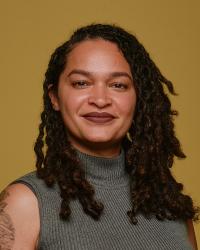The Fall of Giants: How to Build and Kill Massive Galaxies in the Early Cosmos
Allison Man (aman@phas.ubc.ca) and Brett Gladman (gladman@astro.ubc.ca)
All are welcome to this in-person event!
Abstract:
One of the most puzzling discoveries of the decade is that substantial populations of massive galaxies ceased forming stars as early as two billion years after the Big Bang (i.e. by z = 3). These are likely some of the first galaxies in the Universe, yet we have failed to understand how they form and then quench so early on. In order to piece the evolutionary puzzle together, we must capture massive galaxies at all phases of their evolution, from gas-rich star formers to fully quiescent systems -- all at z > 3. Due to the rarity and diversity of the massive galaxy population at z > 3, such an endeavor requires a combination of wide-field observations from the UV to millimeter. In this talk, I will present new results using JWST and ALMA data to identify and characterize z > 3 massive dusty, star forming galaxies and their quiescent descendants. I will share preliminary results on their baryonic profiles (stellar, gas, and dust properties), and share the significance of these results in the context of rapid massive galaxy evolution in the first 2 Gyr of the cosmos.
Bio:

Prof. Arianna Long studies how massive galaxies form, grow, and die in the high-redshift Universe. Her work combines observations with numerical modeling to tease out links and test evolutionary theories between dusty, star forming galaxies in the early cosmos and their fated quiescent descendant galaxies at later times. She uses observations across the electromagnetic spectrum from both ground and space-based observatories, with a specific emphasis on combining JWST and ALMA data. Her research focuses on the baryonic components of these galaxies (i.e. stars, gas, and dust) and how these components evolve over time to create the most massive galaxies in the cosmos.
Alongside her scientific roles, Prof. Long is also an expert in mentorship. As Chief Programming Officer of #VanguardSTEM, Prof. Long develops and leads radical mentoring initiatives to support gender minorities of color in STEM. She also dabbles in science communication, with her written work awarded the 2022 National Academies of Science Excellence in Science Communication Award and featured in the 2022 Best American Science and Nature Writing print compilation.
Learn More:
- See Arianna's faculty webpage at the University of Washington Department of Astronomy here: https://astro.washington.edu/people/arianna-long
- See her 'Eric and Wendy Schmidt Award' for Best Research Scientist here: https://grad.uci.edu/2022/10/13/arianna-long-named-eric-and-wendy-schmidt-award-winner/
- Read the Vanguard STEM Conversations interview with Arianna here: https://conversations.vanguardstem.com/wcwinstem-arianna-long-m-s-she-her-eb5ad0cdc755
Links:
- Most Massive Galaxies in the Universe (Harvard Department of Astrophysics): https://www.cfa.harvard.edu/news/most-massive-galaxies-universe
- Early universe (NASA): https://science.nasa.gov/mission/webb/early-universe/
- James Webb Space Telescope (JWST): https://webbtelescope.org/home
- Atacama Large Millimeter Array (ALMA): https://www.almaobservatory.org/en/home/